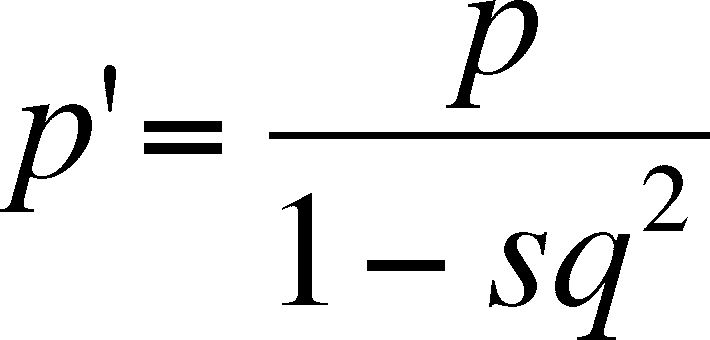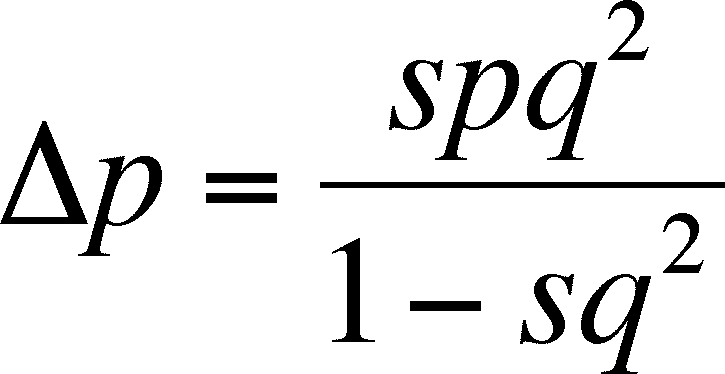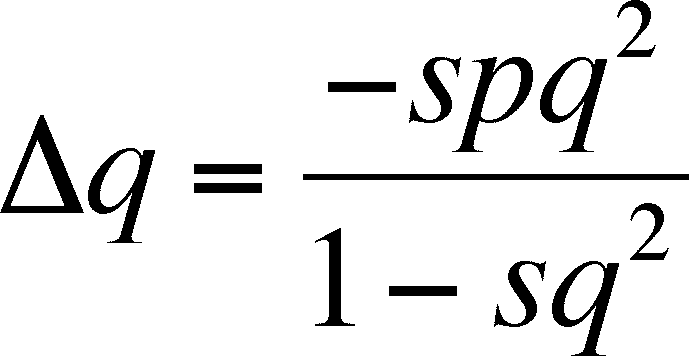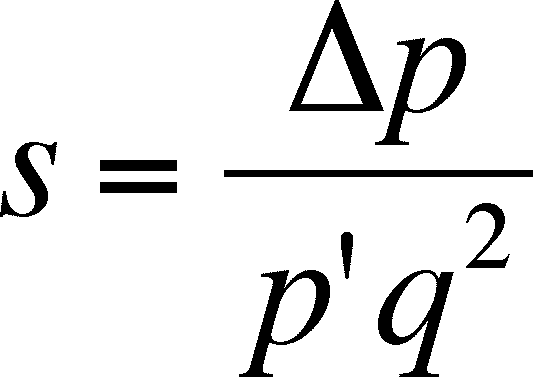|
BIOL 5130
Evolution Phil Ganter 301 Harned Hall 963-5782 |
|
An Adaptation |
|
|
BIOL 5130
Evolution Phil Ganter 301 Harned Hall 963-5782 |
|
An Adaptation |
|
The Theory of Natural Selection
Lecture 02
Back to:
Populations and population genetics
Populations are the fundamental unit of evolution, the smallest object that can evolve
Gene Frequency vs Genotype Frequency
Genotype Frequencies (two alleles)
Proportion of AA = P, proportion of Aa = Q, Proportion of aa = R
Gene Frequency
p = P + 1/2Q, q = 1/2Q + R
Deriving Hardy Weinberg
With three genotypes, there are 9 possible pairings when mating
The question is what are P', Q', and R', the genotype frequencies in the next generation
Mating |
Pr(Mating) |
Ratio of Offspring |
AA
x AA |
P2 |
1.. AA |
AA
x Aa |
PQ |
1/2 AA 1/2 Aa |
AA
x aa |
PR |
.........1 Aa |
Aa
x AA |
PQ |
1/2 AA 1/2 Aa |
Aa
x Aa |
Q2 |
1/4 AA 1/2 Aa 1/4 aa |
Aa
x aa |
QR |
.......1/2 Aa 1/2 aa |
aa
x AA |
PR |
.........1 Aa |
aa
x Aa |
QR |
.......1/2 Aa 1/2 aa |
aa
x aa |
R2 |
................1 aa |
P' = P2 + 1/2PQ + 1/2PQ + 1/4Q2 = P2 + PQ + 1/4Q2
P' = ( P + 1/2Q)(P + 1/2Q), - remember that p = P + 1/2Q
P' = (p)(p) = p2
Q' = 1/2PQ + PR + 1/2PQ + 1/2Q2 + 1/2QR + PR + 1/2QR = 2PR + PQ + QR + 1/2Q2
Q' = 2(PR + 1/2QR + 1/2PQ + 1/4Q2) = 2(P + 1/2Q)(R + 1/2Q) = 2pq
R' is a mirror image of the reasoning behind P' = p2
Assumptions
diploid, sexually reproducing species, discrete generations
no mutation, no migration, no selection
random mating
large population size
Three alleles:
Modelling natural selection in a population
To start, make lots of assumptions:
One locus completely determines phenotype
Two alleles at that locus
Sexual species in which Hardy-Weinberg assumptions hold except for the assumption of no selection
Selection against the homozygous recessive phenotype
Discrete Generations
Selection operates via differences in mortality between birth and maturity with no differences in fertility
Fitnesses:
| Genotypes | AA
|
Aa
|
aa
|
| Relative Fitnesses | 1
|
1
|
1 - s
|
If p' is the gene frequency after selection, then

And the change in gene frequencies is (remember, the increase in p is matched by the decrease in q)
 and
and 
Rearranging the equation for delta p, we can calculate the selection coefficient if we know the change in p:

Fitness Estimation
Industrial melanism is the example in the book, and it presents two models for estimation of fitness:
Relative survival (or fecundity) of genotypes within a generation or over generations
must be able to track individuals (mark recapture for mobile organisms, mapping quadrats for sessile)
Change in gene frequencies over one or more generations
Mutation/Selection Equilibrium
When they operate in opposite directions, an equilibrium gene frequency is reached that depends on the mutation rate and selection coefficient
Assume that the fitness of three genotypes are such that the recessive homozygote is fittest (no difference between the homozygous dominant and heterozygote (keeping it simple):
Genotypes Relative Fitnesses Then selection removes A alleles and mutation produces A alleles and a dynamic equilibrium is reached when the removal and addition rates are equal (from here on, a * means an equilibrium rate or frequency) -
This can be simplified even more if one assumes that the selection coefficient is much larger than the mutation rate, so that m contributes very little to the denominator:
Heterozygous Advantage
Selection for heterozygote can only change the gene frequencies so much as mating re-generates the homozygotes
Highest proportion of heterozygotes when gene frequencies are equal, if both homozygotes are equally "unfit" (if there is no difference in the selection coefficients. In this case, the equilibrium frequency of p = q = 0.5
What if the situation is not symmetric? Here we have fitnesses:
Genotypes Relative Fitnesses Here, the rate of loss of each allele is its selection coefficient times its frequency. An equilibrium is reached when the rate of loss of each allele is equal (assuming no mutation, etc.)
p*s = q*t
To solve for p, substitute for q :
p*s = (1 - p*)t
(for q rearrange and get)
This means that selection does not automatically favor one allele over another and that elimination is not an inevitability
Frequency-Dependent Selection
Predators that hunt according to a type III functional response can result in frequency dependence
Proportion of common morphs eaten greater than proportion of common morphs in the population
Rare morphs ignored and selectively favored
Rare morphs increase until they become the common morphs and are then searched for and eaten
Other Violations of Hardy-Weinberg
Population Subdivision and the Wahlund Effect
Under H-W, subdivision produces an increase in the number of homozygotes without the action of any selection
Take a population, give it a p and q and calculate the H-W proportions
Divide the population into two or three equally large subdivisions
If p and q for subpopulations differs from p and q of total population , you will see the Wahlund Effect
(Has to do with the average of squared numbers)
Migration will unify gene frequencies between subpopulations
Migration can also offset loss of alleles through natural selection. If the fitnesses of geneotypes are:
Genotypes Relative Fitnesses It is possible that, the rate of arrival of new A alleles will balance the rate of loss of A alleles. If so, the equilibrium gene frequency is
The frequency of the A allele in the migrants is pm and m is not the mutation rate, as above, but now is the proportion of migrants in the population each generation.
Last modified on January 24, 2008